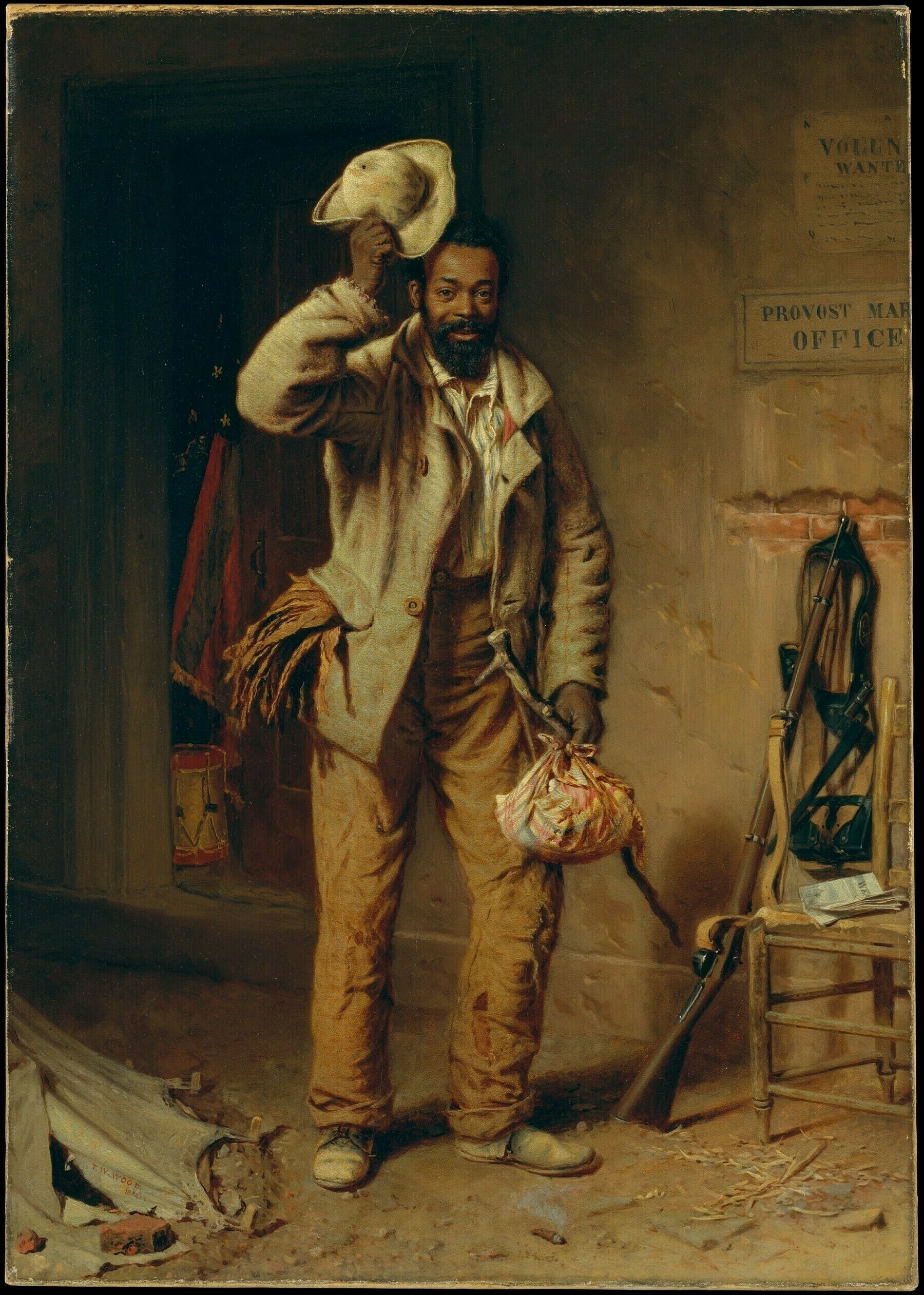'A Bit of War History' – Three Paintings by Thomas Waterman Wood (1865–66)
The word “contraband” referred to an enslaved person who had escaped. Given that the term usually indicated illegally imported or exported goods, its dehumanizing quality in the context of someone who has escaped bondage is palpable. Here, however, it stands in contrast to the painting, which shows a man, not a chattel or a caricature.1
The other two paintings see the same figure transformed into a soldier and a veteran. Both of these images underlined the figure’s manhood. With time, in fact, military service came to be associated with masculinity and citizenship in an age of people’s wars fought in North America and Europe.2
From this point of view, the paintings represent a message not only of self-emancipation through military service but of modern masculine citizenship shortly before the nineteenth amendment was ratified. In the West, this image of manhood and military service reached its high point in World Wars One and Two.
Want to discuss? Sign in below, or reply directly from your own Fediverse, Bluesky, or IndieWeb home.


